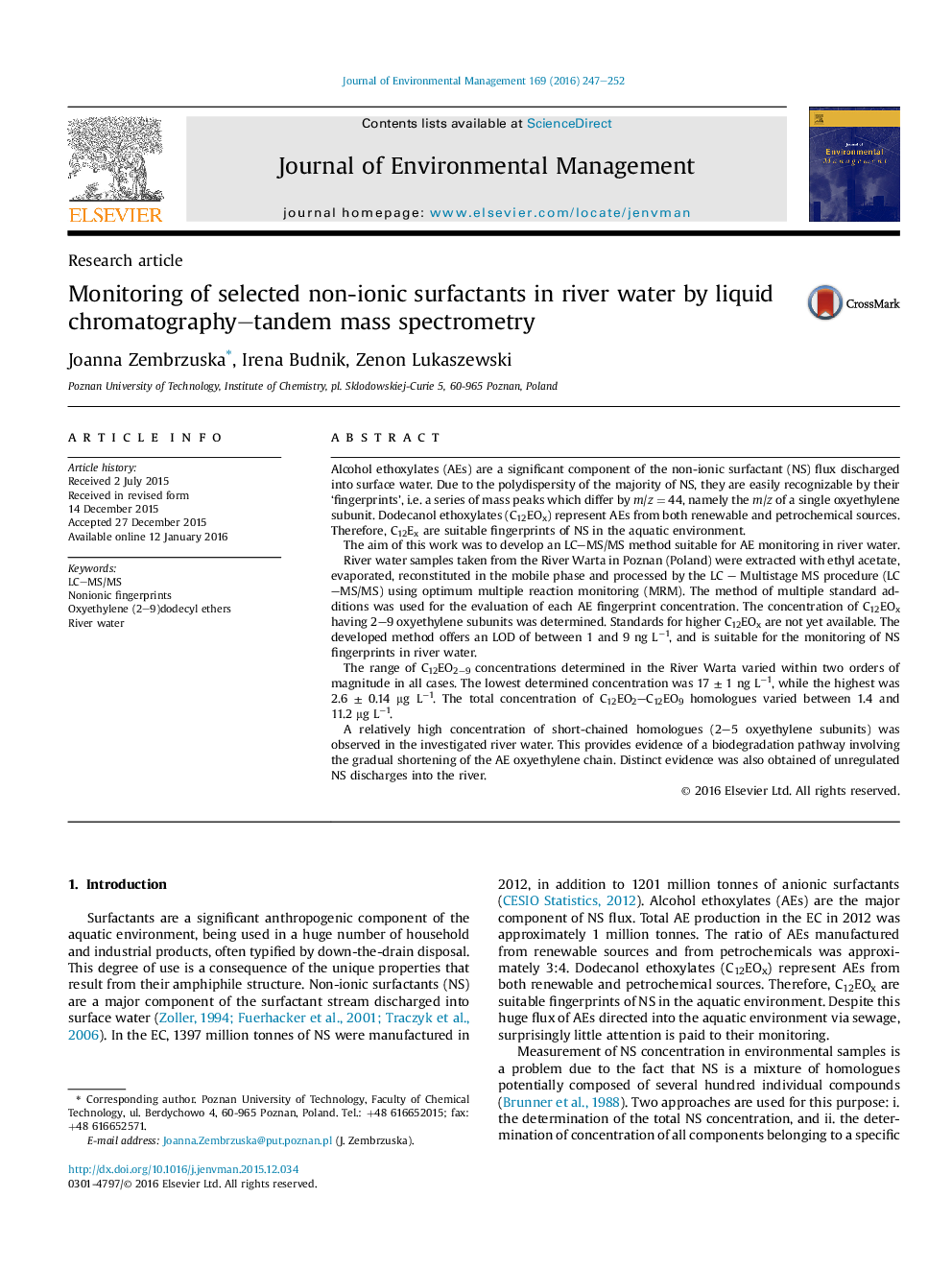| Article ID | Journal | Published Year | Pages | File Type |
|---|---|---|---|---|
| 1055455 | Journal of Environmental Management | 2016 | 6 Pages |
•We use LC–MS/MS method for monitoring of the alcohol ethoxylates in water.•Quantification limits in range of ng L−1 all AE were achieved.•We observed the concentration of short chained homologues in river water.
Alcohol ethoxylates (AEs) are a significant component of the non-ionic surfactant (NS) flux discharged into surface water. Due to the polydispersity of the majority of NS, they are easily recognizable by their ‘fingerprints’, i.e. a series of mass peaks which differ by m/z = 44, namely the m/z of a single oxyethylene subunit. Dodecanol ethoxylates (C12EOx) represent AEs from both renewable and petrochemical sources. Therefore, C12Ex are suitable fingerprints of NS in the aquatic environment.The aim of this work was to develop an LC–MS/MS method suitable for AE monitoring in river water.River water samples taken from the River Warta in Poznan (Poland) were extracted with ethyl acetate, evaporated, reconstituted in the mobile phase and processed by the LC – Multistage MS procedure (LC–MS/MS) using optimum multiple reaction monitoring (MRM). The method of multiple standard additions was used for the evaluation of each AE fingerprint concentration. The concentration of C12EOx having 2–9 oxyethylene subunits was determined. Standards for higher C12EOx are not yet available. The developed method offers an LOD of between 1 and 9 ng L−1, and is suitable for the monitoring of NS fingerprints in river water.The range of C12EO2–9 concentrations determined in the River Warta varied within two orders of magnitude in all cases. The lowest determined concentration was 17 ± 1 ng L−1, while the highest was 2.6 ± 0.14 μg L−1. The total concentration of C12EO2–C12EO9 homologues varied between 1.4 and 11.2 μg L−1.A relatively high concentration of short-chained homologues (2–5 oxyethylene subunits) was observed in the investigated river water. This provides evidence of a biodegradation pathway involving the gradual shortening of the AE oxyethylene chain. Distinct evidence was also obtained of unregulated NS discharges into the river.
Graphical abstractFigure optionsDownload full-size imageDownload as PowerPoint slide
